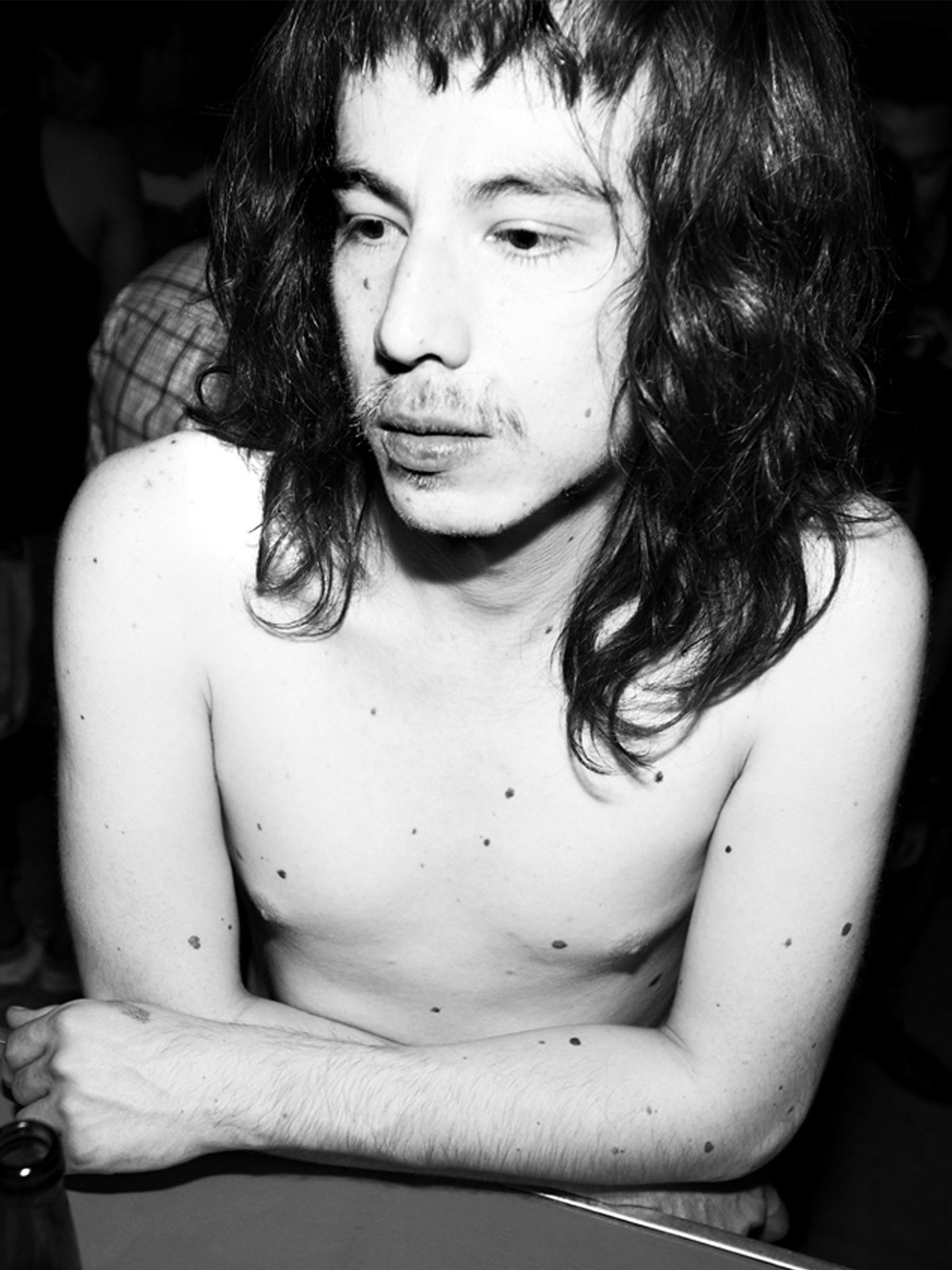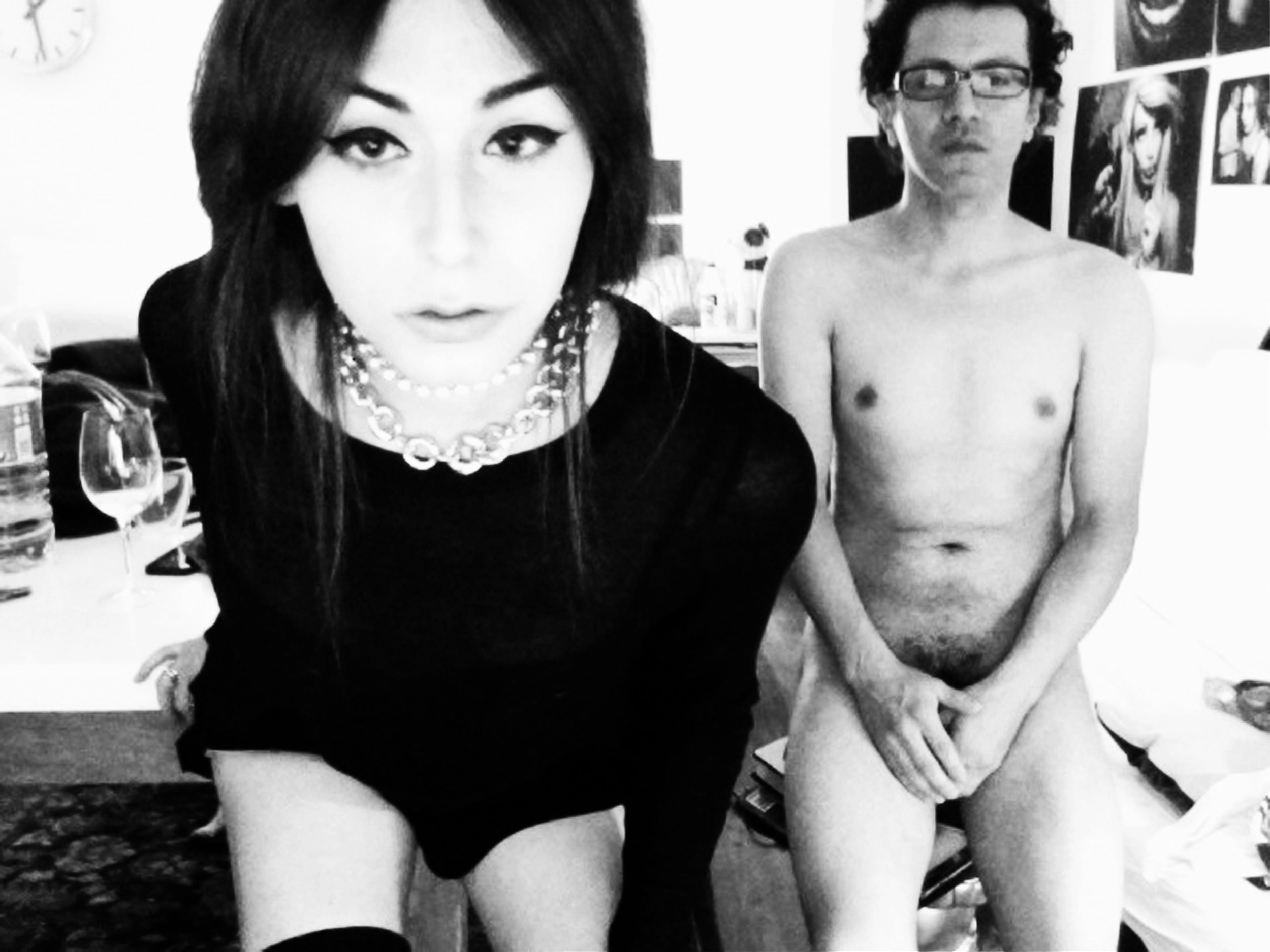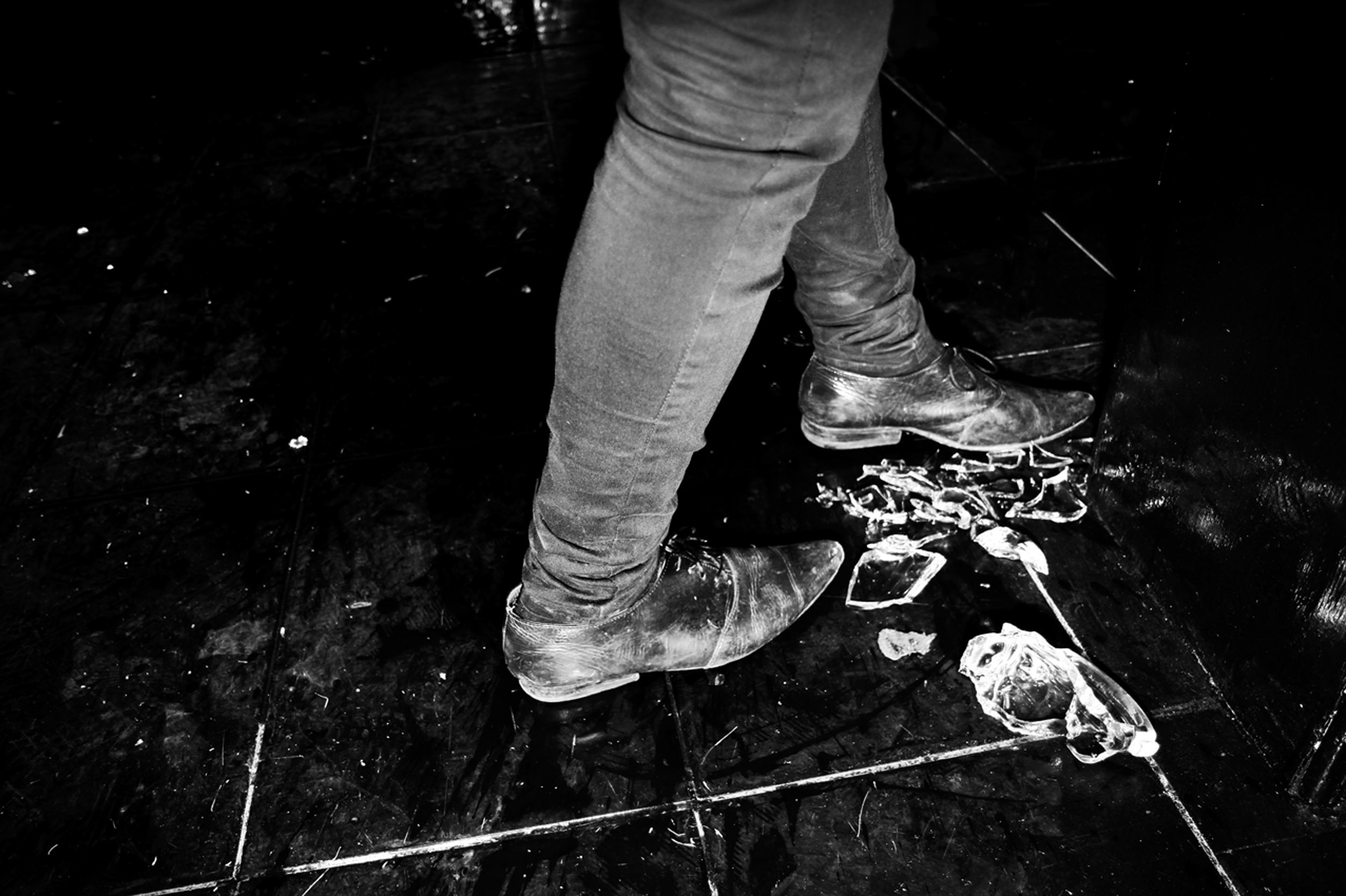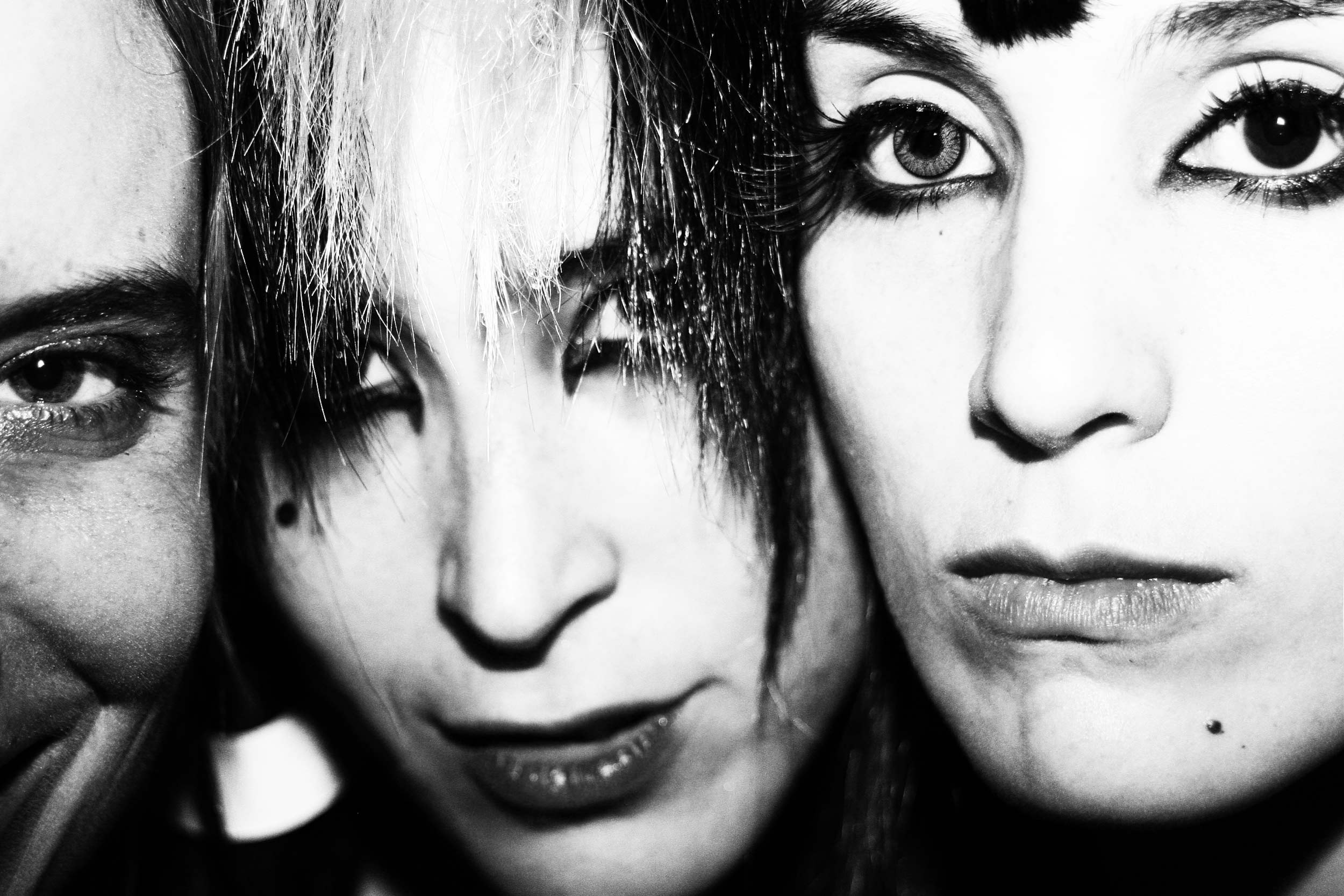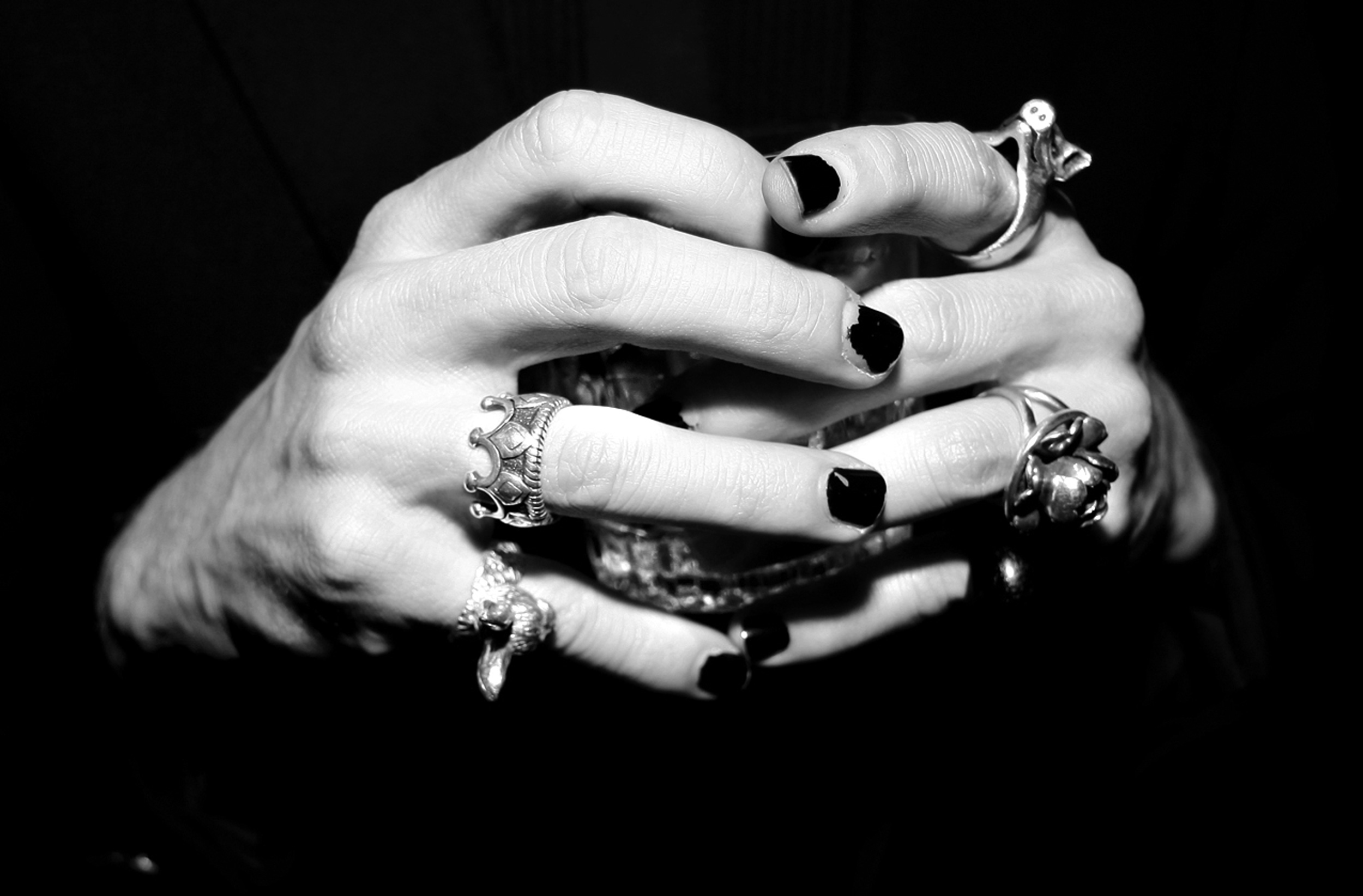How a Catholic upbringing, phobia of sunshine, and sexual exhibitionism informed the photographer's approach to documenting nightlife.
As Mexican photographer José de Jesús “Chucho” León Hernández delves into the recesses of his memory, rooting through the experiences of his formative years, the impressions emerge, shining brightly for a moment before fading to black like scenes from an old movie, with the occasional still image sometimes appearing, perfectly crystallizing the beauty, horror, joy, and despair of his youth.
Born in the Colonia Doctores neighborhood of Mexico City, Chucho was raised by his aunts, two devout Catholic women who adorned their home with vivid images of suffering: the Passion of Christ covered in blood and souls burning in Purgatory. Surrounded by altars and daily prayers, reminders of the Apocalypse lingered and perfumed the air, hovering like a shadow ready to cast out the light.
“I remember fear in every sense of the early knowledge of my homosexuality,” Chucho says. “My aunts were obsessed with the end of days and searching for a better afterlife because they were convinced that people are in this one just to suffer. [The doctrine] is called Valle de Lágrimas (Latin vallis lacrimarum or ‘vale of tears’), which seems so sad and beautiful to me, due to the classic Catholic paraphernalia of saints being tortured. Oddly, the Devil was never mentioned at home.”
Chucho began to develop a passion all his own, a love for the darkness born of the protection it offered. “As a kid I developed a phobia of sunlight,” he says. “One of my first memories was to be staring and blinded by the sun.” Chucho quickly came to understand the power of rebellion to subvert, transform, and ultimately control the narrative. As a young adolescent he sought out Satanic and sexually explicit imagery, which he mixed with openly gay exhibitionism to provoke and frighten his entire family. “They were concerned but also thrilled and sometimes delighted to see someone that young [freely express themselves],” he says.
“Films and music have been a lifesaver and source of inspiration. My aunts were influenced by melodrama and Mexican cinema was and still is full of it. I used to go with one of my aunts to the gigantic old Art Deco cinemas downtown and that was even more exciting and fantastic than the movies themselves. The atmosphere and the darkness, they were maybe the safest place around.”
By the age of 15, Chucho got turned on to German films, discovering the works of F.W. Murnau, Fritz Lang, Josef Von Sternberg, Georg Wilhelm Pabst, and Erich Von Stroheim, reveling in the ecstatic mix of drama and glamour that defined their transgressive art. He also found inspiration in music by Serge Gainsbourg, Cuba’s Bola de Nieve (‘Snowball’), the psychedelic stylings of Les Rallizes Dènudès, and Japanese noise groups. “I like to think that everything can be directed, edited, and musicalized,” the artist says.
Two years later, Chucho’s boyfriend gave him a Polaroid camera, and a star was born—one that emerged out of the rubble of the 1985 Mexico City earthquake. By that time, Chucho and his aunts had moved downtown to colonia Roma, a once aristocratic neighborhood that since had deteriorated into something far more decadent. Here, Chucho met bohemians and began to experiment with drugs and freedom. “Wandering this city at night was the best and most important thing: to run away in search for sex and eventually for friends,” he says.
When the earthquake struck, the Colonia Doctores neighborhood of his youth, which is filled with hospitals and funeral parlors, was devastated. The 8.0 quake took the lives of anywhere from 5,000 to 45,000 people. The figures are in dispute as a result of the government’s response to the tragedy: then-President Miguel de la Madrid ordered a news blackout and did not address the situation for 39 hours. “After the quake, downtown became very somber due to all the deaths and the fact that the government decided to stop rescuing the bodies under the ruins,’ Chucho says. “Instead they started to clean the ground where the buildings were in order to avoid a sanitary emergency. The smell of decomposing bodies everywhere.”
In this theater of carnage, inspiration struck, perhaps channeling the artist’s formative fears around the impending threat of suffering and doom. “Every Saturday, I used to go downtown and dance in a ballroom in a huge Neoclassical building surrounded by Baroque chapels, porn cinemas, and live sex bars. It was the perfect set to create something new,” Chucho says. “I decided to make auto portraits first: nudes on the ruins of empty buildings, as well as Polaroids and 35mm photographs of the almost abandoned chapels. Later I began to make portraits of people and debris in porn cinemas. It didn’t take long to realize that photography was the perfect way to communicate and exorcise my ideas about beauty, horror, light, joy, composition, and music. Not just as a single image, but as a series like in a symphony as you would in a magazine or book.”
For Chucho, night became his muse, the space where anything could happen and often would. Inspired by nota roja—Mexico’s lurid tabloid newspapers that are notorious for mixing explicit photographs of violence, crime, trauma, and tragedy with movie stars, hot gossip, and horoscopes—Chucho understands death is a part of life, a reminder not only of our mortality but the constant presence of the unknowable other side. Rather than adopt the interminable pursuit of happiness, he embraces it all; the good, the bad, and the ugly parts we often try to hide or deny.
Last year he released Vida (Edition Patrick Frey), a collection of his lurid color images of nightlife. More recently, he created THE NIGHT, a limited edition of high contrast black and white photographs that draws inspiration from Diana Vreeland’s Allure, portraits of Edgar Allen Poe and Charles Baudelaire, Verve and Interview magazines, pornography, and dreamlike sequences to create a cadence and a choreography that you might find in a horror film with a soundtrack by Philippe Sarde or Bernard Herrmann. Here Chucho gives us a gritty, graphic, glamorous look at the dark corners of Mexico City between 2010–2015 where fantasies flutter like spirits through the air, ephemeral yet enduring glimpses of our poignant temporal realm.
“[I love] the fantasy of an ideal woman or man that lives only in my imagination and [find myself drawn to] a detail, maybe a shoe, a hair, a way to hold a cigarette, a gaze or a way of walking, a certain voice tone. I make beautiful portraits at parties because everyone, me included, is in a trace, and no one knows what is going to happen,” Chucho says. “I explore and photograph the morbid side of the city: night terrors, witchcraft, strange encounters like animal sacrifices I see. I am the night.”


